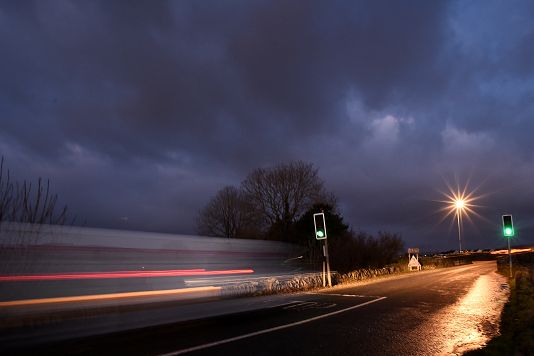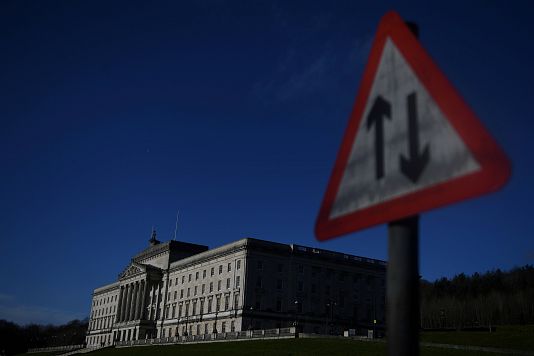As we are nearing the 20-year anniversary of the signing of the Good Friday Agreement, Northern Ireland is at its most consequential moment since the ending of the three decades of violence.
Murmurings of the "Irish question" have been on the lips of Westminster politicians since the Brexit vote in 2016. In reality, the Irish border was a rare feature in the political debates running up to the referendum. In the two years since the vote, the 'backstop' has become the key sticking point which could lead to the UK crashing out of the EU without a deal - an outcome every party wishes to avoid. So, why is the Irish border so complex?
Why is it so complicated?
The Troubles:
After a war of independence against British rule, the Anglo-Irish Treaty was signed in 1921 which saw a border delineation between the north and south of Ireland, with six counties remaining under British rule. In the late 1960s, nationalists, mainly self-identified Catholics, protested for equal rights for the likes of social housing and voting rights. This triggered three decades of violence between nationalists who wanted a reunification of Ireland, and unionists, mainly Protestants who aimed to remain within the UK.
The signing of the 1998 Good Friday Agreement ended the violent period which saw over 3,600 people being killed. Among other issues, such as cross-border initiatives, it was agreed that Stormont (the Northern Ireland Assembly) would perform under a model that would share power between parties in order to lessen sectarian divisions. The two largest parties in the Northern Ireland Assembly are Sinn Féin, the left-wing nationalist party and the conservative Democratic Unionist Party (DUP) aligned with unionists.
The collapsed Northern Ireland government:
In the most consequential moment for Northern Ireland's history in 20 years, there is no government in place. As of March 2017, power in Northern Ireland has devolved to Westminster. The financial scandal coined "Cash for Ash" led to the collapse of the Northern Ireland government which stems from a subsidy programme set up by the Department of Trade, Enterprise and Investment (DETI) when Arlene Foster was in authority as Minister. In short, the botched energy scheme will cost over £1 billion with estimates reaching £500 million to be saddled by the Northern Irish taxpayer.
The "Cash for Ash" scandal triggered the election which ultimately led to the crumbling of power-sharing for the first time in over a decade. However, the failure to cement agreement on key issues such as the Irish Language Act, which would place the language on equal status with English, stems back to the values and history of each party, makes the collapse of the government all the more complex.
Sinn Féin and the DUP have vastly different ideologies, which caused the political deadlock to break the international record for the longest country without an elected government on August 28 at 589 days. Although Sinn Féin has stonewalled a return to coalition with the DUP until Foster steps aside while the "Cash for Ash" investigation is underway, in truth, the debacle has little to do with the stalemate. Negotiations between the two have collapsed repeatedly as they continue to reach stumbling blocks ranging from same-sex marriage to abortion, from the Language Act to impasses with regards to the legacy inquests into killings during the Troubles.
Border-crossings:
The sheer number and nature of border crossings also remains a distinct issue. On August 26, the Irish government confirmed that there are 206 border crossings in what was the first official count since the partition. In fact, there are around 40% more border crossings between the north and south than there are along the whole of the Eastern Europe border. Irish media reported that the count was a "nightmare" according to emails between the technicians carrying out the project along the 500-kilometre frontier.
What is the 'backstop'?
The "Backstop Agreement" was a consensus reached between the UK and EU to ensure that a hard border with custom checkpoints and infrastructure is avoided. The agreement would act as an “insurance policy” in the event of a no-deal. The EU vision of a backstop would see Northern Ireland remain aligned with some EU customs regulations. The UK, however, is at complete odds with the EU on this, saying that Northern Ireland would need to follow suit on leaving the EU’s customs territory.
Theresa May's Brexit deal faced a landslide defeat in the House of Commons. The 432-to-202 vote on January 15 represents the largest government defeat in Parliament history, with the backstop the primary cause for concern.
What do the major players want?
The EU:
President of the European Commission Jean-Claude Juncker scorned May’s Chequers plan, saying that the UK cannot have the “same privileged position as a member state” when it comes to matching the EU’s custom and goods regulations. Again, the sticking point remains that the EU is suggesting that Northern Ireland remain within the single market, which has been rejected by May’s Conservatives who have failed to offer a credible alternative.
Ireland:
The Irish government's main aim is to avoid a return to a hard border. Taoiseach (Prime Minister) of Ireland Leo Varadkar
Tánaiste (Deputy Prime Minister) of Ireland and Minister for Foreign Affairs, Simon Coveney criticised May's plan to allow the DUP a veto on a backstop agreement. Speaking on RTE's Marian Finucane show Saturday, he said: “We cannot allow one party in Northern Ireland to veto any proposals.” Although assuring that there was “no question of a border down the Irish Sea”, Coveney said that "there are practical realities of trade" need to be considered and that a proposal needs to "protect the concerns of both unionists and nationalists, neither of whom want a border re-emerging on the island of Ireland”.
Northern Ireland:
In a move that was seen by many as controversial, the DUP signed a deal with Theresa May's Conservative Party in June 2017 to ensure her place as UK Prime Minister while preserving her party's weakened majority. Upon signing the agreement, May said that she hoped that power-sharing would be re-established by the end of that month, although the deadline came and went. The deal saw DUP gaining power in UK politics and a voice in EU negotiations, with this seen as adding strain on power-sharing and shadowing the UK's neutrality stance with doubt by critics.
The DUP are looking to safeguard their union with Britain. European Union’s chief Brexit negotiator Michel Barnier proposed a sea border between Ireland and the UK, which was hailed unacceptable by Foster.
Hitting out at Barnier for suggesting a border along the Irish Sea, Foster said that the proposal was "an all-Ireland regulatory scenario" and added that she didn't "think he does understand the wider unionist culture of Northern Ireland".
In contrast, President of Sinn Féin, Mary Lou McDonald succeeded Gerry Adams in January. In her inaugural address, she spoke of her party's “ultimate goal of Irish unity”.
Conservative Party and the Brexiteers:
Theresa May's Chequers plan went up in smoke at the meeting between the 28 EU leaders in Salzburg last week. Despite in-fighting within the Conservative Party, May unveiled the Chequers plan in July. Seen as a weak exit plan, prominent Brexiteers David Davis and Boris Johnson reigned in protest.
Theresa May and Barnier are at an "impasse" when it comes to negotiations with the position of the border being the sticking point. Hardline Brexiteers and the DUP aim for the north to be treated no differently than the rest of the UK. In her Chequers plan, May aimed for the country to maintain a common rulebook thus maintaining trade harmony with the EU.
The issue is that should Northern Ireland diverge from EU customs rules, as Brexiteers suggest, the differing regulatory rules between the north and south brings forth again the stumbling block of how customs checks would run.
David Davis, the former Brexit secretary, suggested an electronic border although many are sceptical that such technology exists. Former foreign secretary Boris Johnson remains one of May's biggest threat to her position. Johnson, however, hailed the backstop negotiations as “a monstrosity” that threatens UK sovereignty from the EU. In an Institute of Economic Affairs report endorsed by Johnson and unveiled Monday, the “Plan A+” aims for a pro-competitive economic agenda. The document aims for a basic "free trade agreement" between the EU and UK such that customs can take place away from the border.
In an increasingly complex web, the major players remain divided. The most contentious issue of all, however, is how the border will affect those living along it. The border is much more than trade agreements. Farmers north and south of the border have a symbiotic relationship, relying on each other for trade while remnants of a divisive era remain on murals in Belfast. As we near the two-decade anniversary of the signing of the Good Friday Agreement, a Brexit date also looms with politicians divided and impasses remaining.













